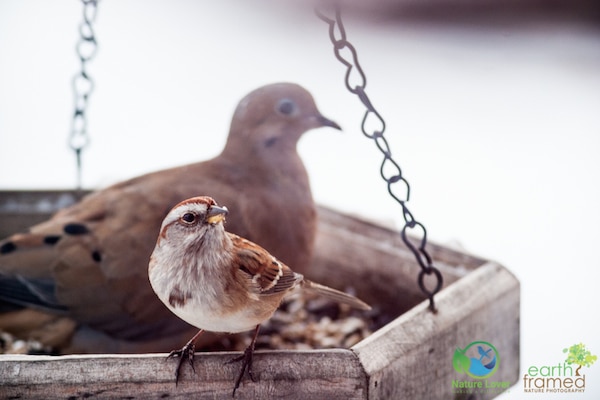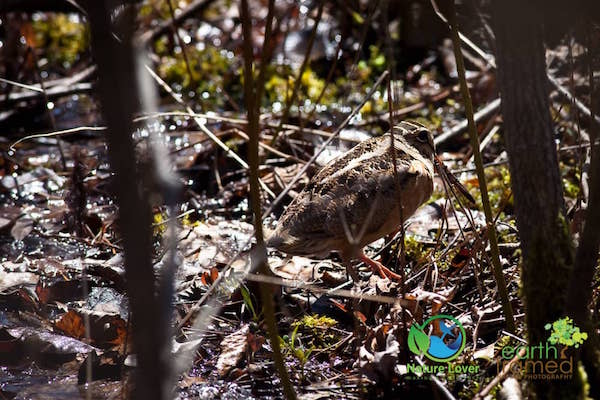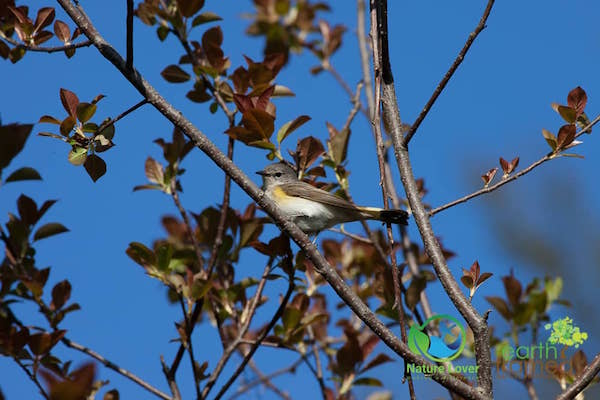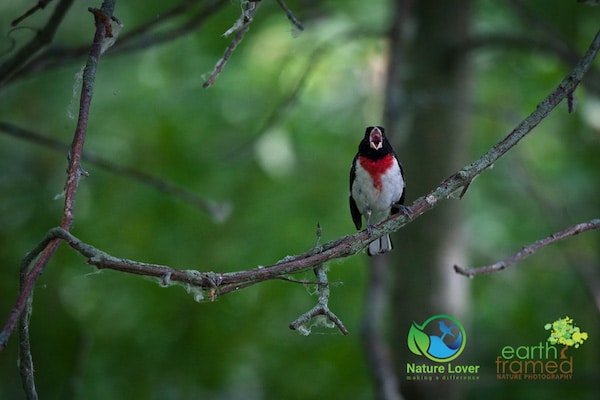We live in a fairly new area, which means that there aren’t as many trees in our part of the neighbourhood and some are still fairly immature. In our yard we have a spruce in the front yard that may be 30 years old and then a young Blue Beech. Our feeders are placed near the spruce tree for protection and cover for the birds. We also have a few feeders close to the house (less than 4 feet away to avoid high speed window collisions). The following images were taken throughout the month of November, 2014. From the pictures I can tell you that we had two separate snowfalls, with melting in between.
We do not get a wide variety of birds to our property, although we are gradually seeing a few new ones that travel down from the older part of the street. As the trees and bushes mature around us, we hope to see more species.
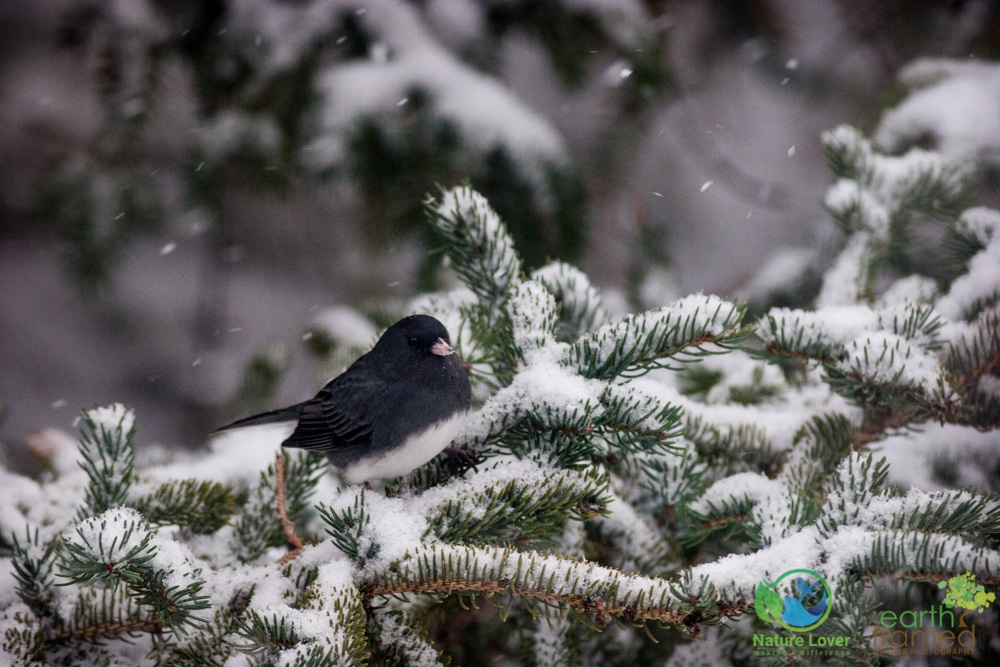 One of our absolute favourite visitors are the Dark-eyed Juncos. Southern Ontario is actually within their winter range and although many migrate passed us, some of the last ones spend their winters here. They are adorable little birds that prefer to eat on the ground but will feed off of platform feeders.
One of our absolute favourite visitors are the Dark-eyed Juncos. Southern Ontario is actually within their winter range and although many migrate passed us, some of the last ones spend their winters here. They are adorable little birds that prefer to eat on the ground but will feed off of platform feeders.
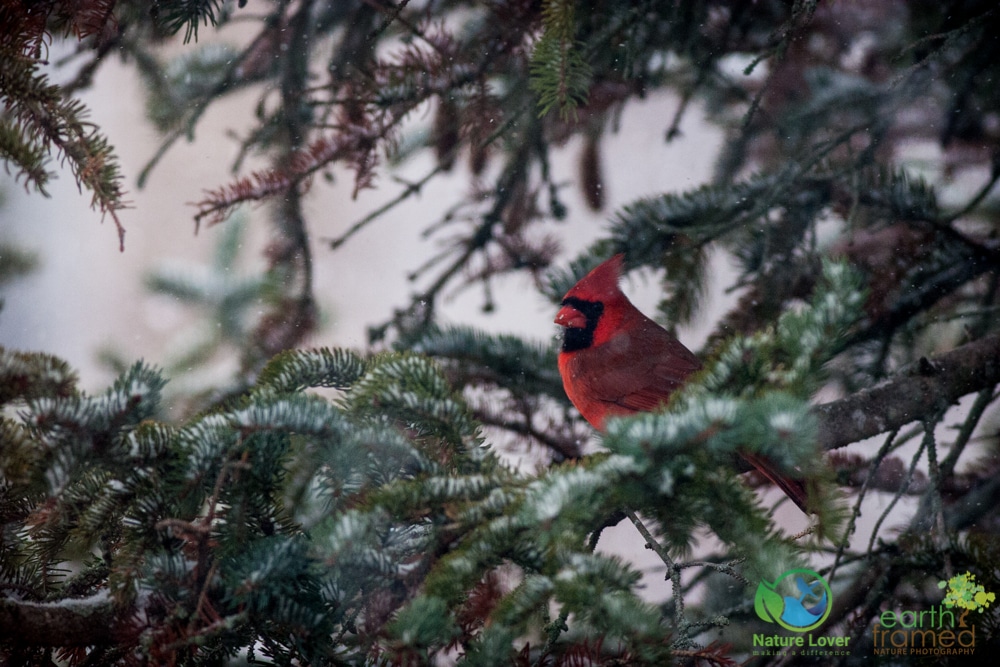
Northern Cardinals are always welcome visitors to any feeder. They are so brightly coloured and they get along well with other birds, sharing the space and the seeds. I find they often come in the early evening, just before dust, when the other birds have already finished feeding for the day. They will also make appearances off and on during the day but they, and the Mourning Doves, are some of the last birds I see before dark. 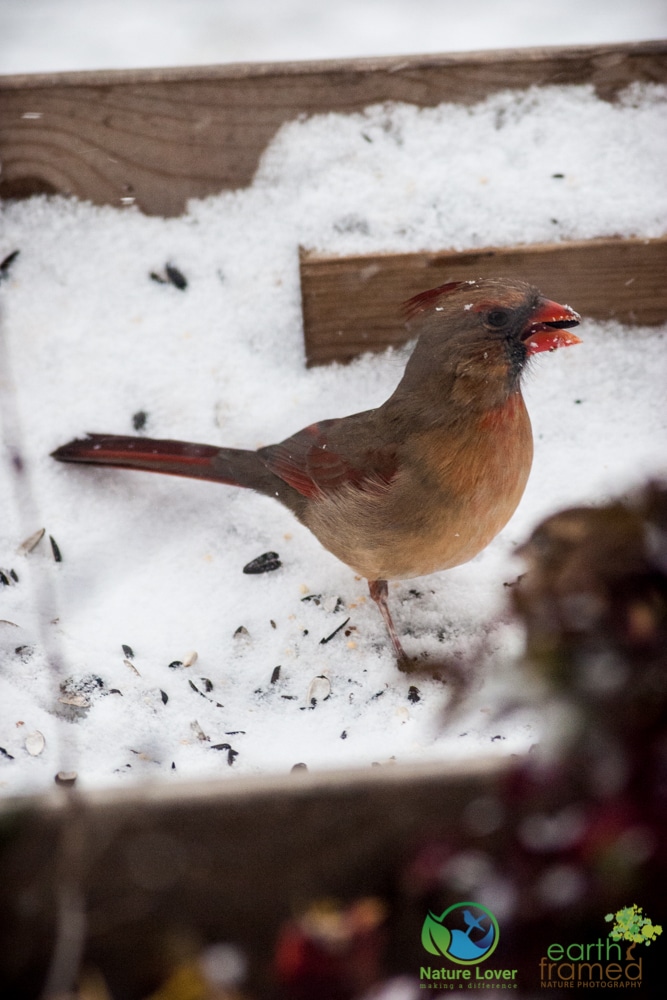
I think the female Cardinal is just as beautiful in her colours as the male is. As the one that sits on the nest, she has to be less vibrant, but if you take a close look you will see she has a large variety of colouring and shading in her feathers. Like the male she also has that thick, bright orange beak that is hard to miss.
Did you know that both the male and female Northern Cardinals sing? This isn’t very common. Usually it is only the male songbird that sings but not with the cardinals.
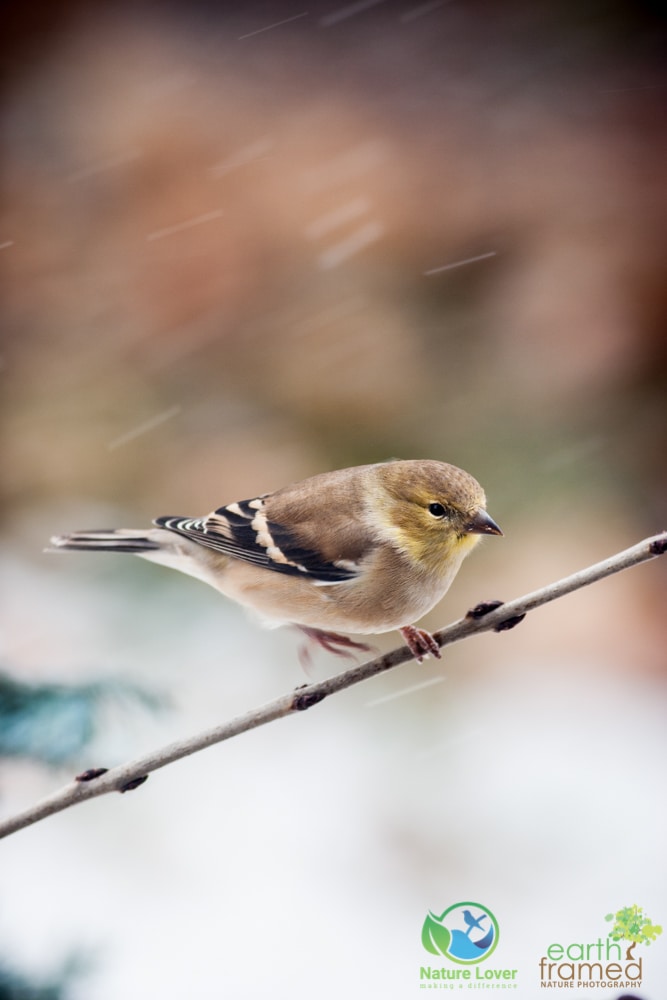 This male American Goldfinch, already in its winter, dull colours, was fending off the sleet that was falling. These birds stay here all year round and they have the cutest song. We can have several dozen of these feeding from our nyjer feeders during the winter.
This male American Goldfinch, already in its winter, dull colours, was fending off the sleet that was falling. These birds stay here all year round and they have the cutest song. We can have several dozen of these feeding from our nyjer feeders during the winter.
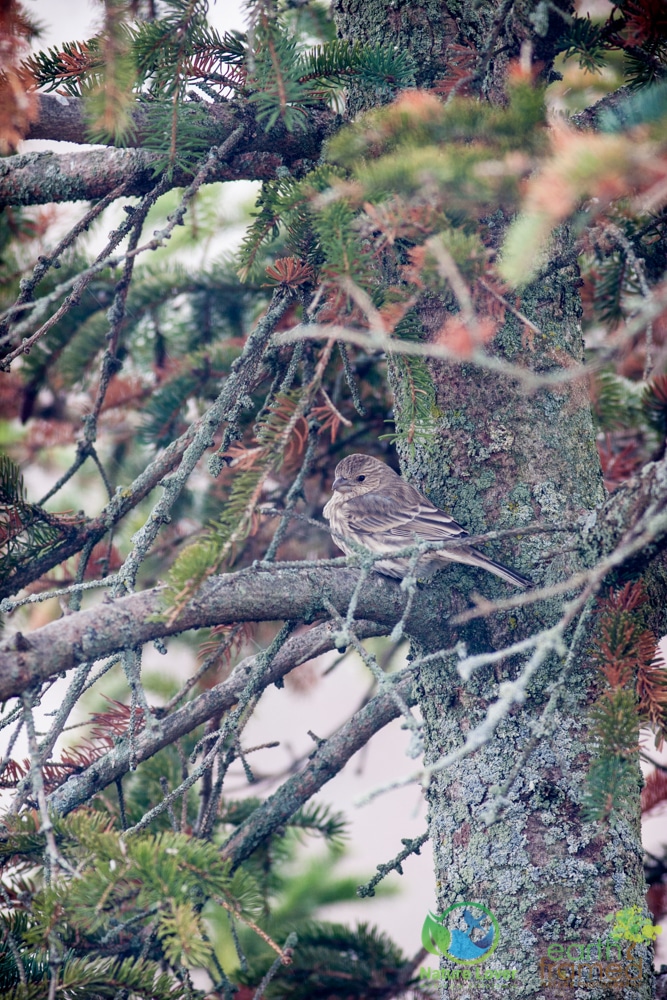
The female House Finch can be mistaken for a sparrow but if you look closely you will see that her beak is much thicker than a sparrows.
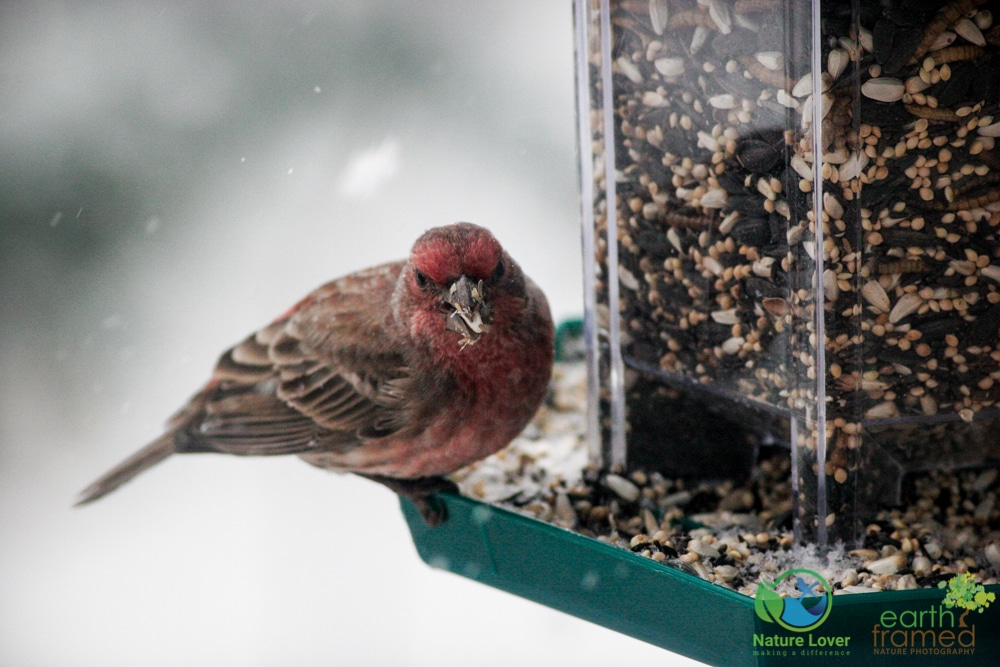 The male House Finch, with its red head and breast, is easily identified as a finch species but it can be difficult to distinguish it from the Purple Finch. The House Finch was originally from western North America but was introduced to the east (and to Hawaii). Keep careful watch for finches with eye diseases, known as conjunctivitis. It is easily spread and the best was to prevent its spread is to keep your feeders cleaned and to clean them often.
The male House Finch, with its red head and breast, is easily identified as a finch species but it can be difficult to distinguish it from the Purple Finch. The House Finch was originally from western North America but was introduced to the east (and to Hawaii). Keep careful watch for finches with eye diseases, known as conjunctivitis. It is easily spread and the best was to prevent its spread is to keep your feeders cleaned and to clean them often.
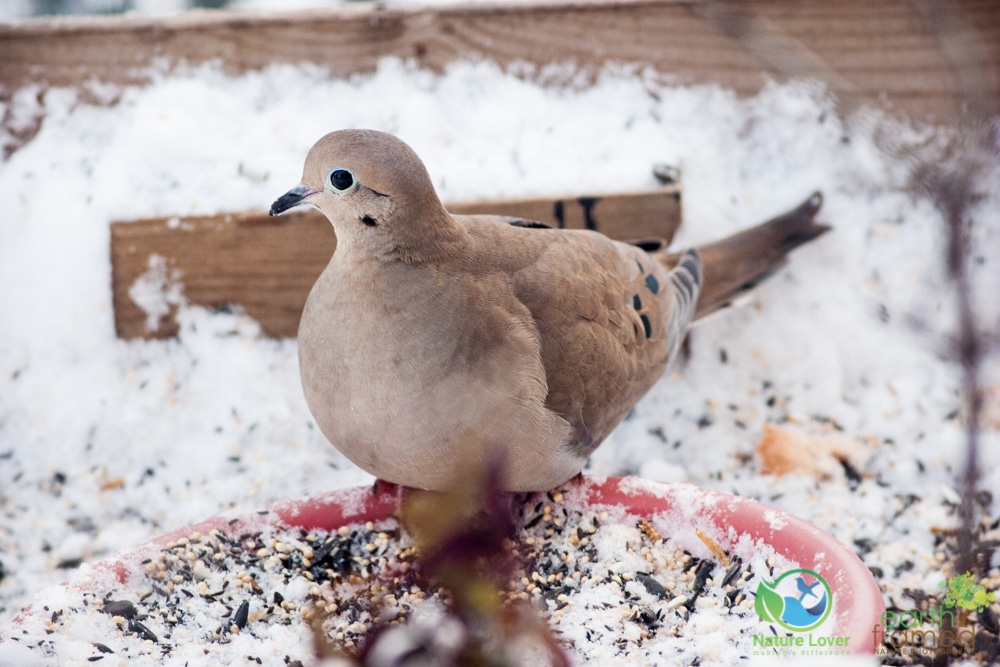
Mourning Doves are another bird you can find in Southern Ontario year round. This small headed dove can be found perched on wires, fences, up on roofs or around bird feeders. Their soft cooing sound is relaxing and mournful at the same time. They prefer to feed from the ground or on a platform feeder and their favourite bird seed is plain, old millet.
Did you know that there was a hunting season in Ontario for Mourning Doves? Really? I wish I hadn’t come across that information. 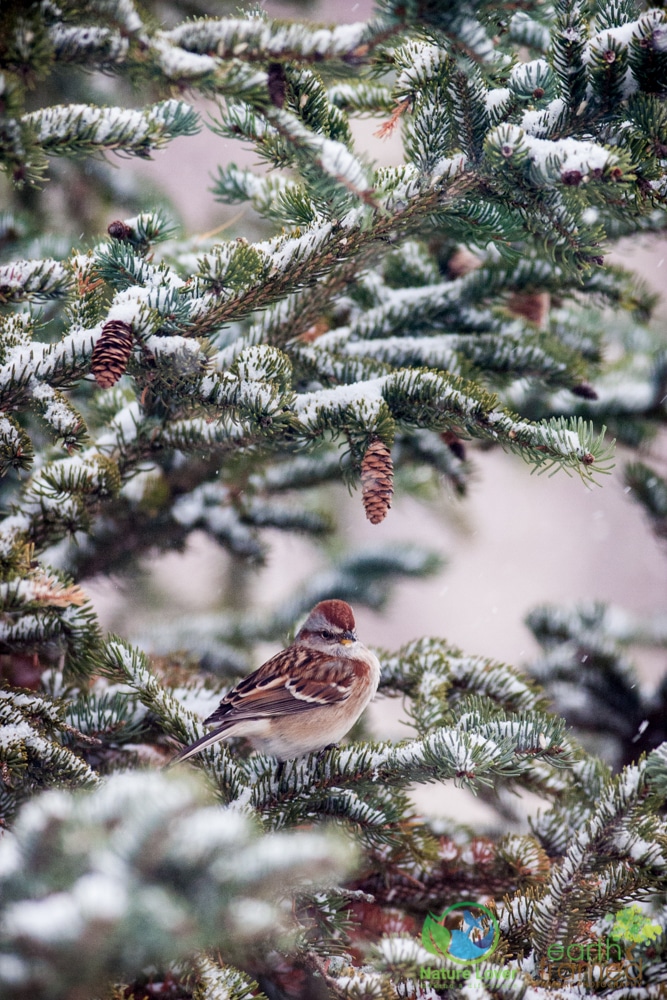
The American Tree Sparrow is a small sparrow whose winter range includes Southern Ontario. Other than the size, the best identifying mark on these sparrow is there rusty cap and the large grey swatch above the eye. They also have a dark smudge in the middle of their unstreaked breast. We usually only have a few of these and they seem to keep to themselves.
The other frequent visitor to our feeders is this gray squirrel. No matter what I try to do, I can’t stop them from finding the seeds and indulging themselves. I started putting a peanut feeder in the backyard to try to keep them from disturbing the birds in the front. It does help, at least some of the time. These metal peanut feeders also keep them from eating you out of house and home since they can only get a little bit at a time.
I do enjoy the antics of the squirrels when they aren’t gorging themselves on the bird seed or scaring all the birds away. Sometimes you just have to figure out a place for them to visit and then feed them there. You could put out dried cobs of corn somewhere away from your main feeders to encourage them to seek food in their own ‘area’.
Doesn’t he have really cute stripes on his belly though?


